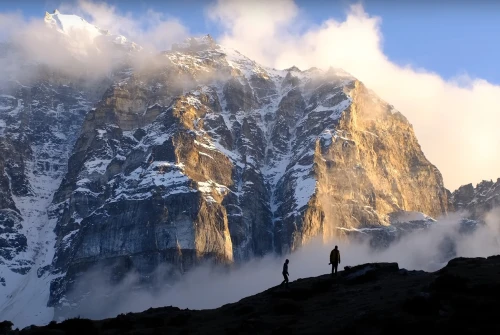Rupse Jharana – Gateway to Mustang
Rupse Jharana, meaning “beautiful waterfall” in Nepali, is a breathtaking natural wonder located in Dana village, Myagdi district, along the famous Annapurna Circuit trekking route. Cascading from an impressive height of around 300 meters (984 feet), this waterfall is a must-visit stop for trekkers, road trippers, and photographers traveling toward Jomsom and the Upper Mustang region.
The waterfall’s thundering white water crashes down into the Kali Gandaki River, just a short distance from the entrance to the world’s deepest gorge – the Kali Gandaki Gorge. It is one of the most photographed waterfalls in Nepal thanks to its accessibility visible right from the Beni–Jomsom highway and its dramatic backdrop of lush hills and rocky cliffs.
Many trekkers pause here to refresh before venturing deeper into the Mustang region, while road travelers often take short breaks to capture stunning pictures. The sight of misty spray rising from the waterfall on sunny days creates rainbow-like patterns, making Rupse Jharana even more magical.
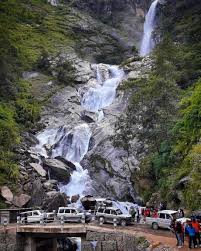
Nearby Attractions & Treks:
Annapurna Circuit Trek – Pass through Dana, Tatopani, and Marpha.
Ghorepani–Poon Hill Trek – Famous for panoramic Himalayan sunrise views.
Tatopani Hot Springs – Relax in natural hot water pools just a short drive away.
Best Time to Visit:
Spring (March–May) – Ideal for warm weather, blooming rhododendrons, and crystal-clear views.
Autumn (September–November) – The most popular trekking season with stable weather and vibrant landscapes.
Monsoon (June–August) – The waterfall is at its most powerful, but road and trail conditions can be challenging.
How to Reach:
Travel Tip:If you are trekking or driving through Dana during lunchtime, stop at one of the roadside teahouses. You can enjoy traditional Nepali dal bhat while admiring Rupse Jharana from your seat, a perfect blend of nature and culture.
Davi’s Waterfall (Patale Chhango)
Davi’s Waterfall, locally known as Patale Chhango, is one of the most iconic natural attractions in Pokhara, the gateway to many of Nepal’s famous trekking routes. Unlike most waterfalls that flow into rivers or plunge into open valleys, Davi’s Fall disappears mysteriously into a 300-foot-long underground tunnel, eventually feeding into the Phewa Lake and the Seti River system.
The waterfall got its name from a Swiss woman named Davi (or Davis), who was tragically swept away by the strong current in 1961. Today, it is a popular sightseeing spot for both domestic and international travelers, with landscaped gardens, viewing platforms, and stone carvings.
Located just 2 km southwest of Pokhara’s Lakeside area, it’s an easy stop for visitors before or after treks such as the Annapurna Base Camp (ABC), Mardi Himal, or Ghorepani–Poon Hill. Right across the street, you can also explore the Gupteshwor Mahadev Cave, which runs parallel to the waterfall’s underground path.
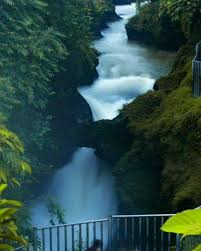
Highlights:
Unique underground flow vanishing into the earth.
Fascinating legend and tragic history behind its name.
Close proximity to Gupteshwor Mahadev Cave, known for its sacred Shiva shrine.
Nearby Treks:
Annapurna Base Camp Trek – Scenic journey into the heart of the Annapurna Sanctuary.
Mardi Himal Trek – Short but spectacular route to Mardi Himal Base Camp.
Ghorepani–Poon Hill Trek – Renowned for sunrise views over the Annapurnas and Dhaulagiri.
Best Time to Visit:
How to Reach:
Travel Tip:Visit in the late morning or early afternoon for the best light on the water. If you’re heading on a trek afterward, this is an ideal spot to soak in Pokhara’s charm before venturing into the mountains.
Pokali Jharana
Pokali Jharana, located in Okhaldhunga District of Eastern Nepal, stands as one of the tallest waterfalls in the country, plunging over 130 meters (426 feet) amidst lush mid-hill landscapes. Known for its secluded beauty, Pokali is a hidden gem that rewards adventurous travelers willing to trek through terraced hills, small villages, and verdant forests.
The waterfall cascades gracefully into a rocky pool, offering mesmerizing sights and sounds that are unmatched in Nepal’s trekking regions. Local folklore adds an element of mystery and cultural richness to the area, as Pokali Jharana is also considered a sacred site by nearby villagers.
Nearby Treks & Attractions:
Okhaldhunga Village Treks – Explore the mid-hill communities, rich in Tamang and Rai culture.
Likhu and Dudh Koshi Valley Treks – Scenic trails featuring waterfalls, terraced fields, and Himalayan views.
Pokali Forest Trails – Ideal for short day hikes, birdwatching, and photography enthusiasts.
Best Time to Visit:
Monsoon Season (June–August) – The waterfall is at its most powerful, creating a spectacular natural show.
Post-Monsoon / Autumn (September–November) – Clear skies and vibrant foliage enhance the surrounding scenery.
Spring (March–May) – Pleasant temperatures and blooming rhododendrons make trekking to Pokali even more enjoyable.
How to Reach:
By Road: Pokali is about 12 hours by car from Kathmandu, passing through Kavrepalanchok, Dolakha, and Ramechhap.
By Trek: A 1–2 hour walk from the nearest village, allowing travelers to experience authentic rural Nepal.
Travel Tip:Carry comfortable trekking shoes and rain protection during monsoon visits. For photographers, early morning or late afternoon provides the best natural lighting for capturing the waterfall’s full glory.
Tindhare Jharana (Bahubali Falls) – The Three-Stream Wonder
Tindhare Jharana, also popularly known as Bahubali Falls, is a stunning waterfall located in Roshi Municipality, Kavrepalanchok District, east of Kathmandu. Its unique three-parallel streams cascade down from approximately 300 meters (984 feet), creating a spectacular natural spectacle that has recently gained attention on drone photography platforms and social media.
The name Tindhare, meaning “three streams” in Nepali, reflects its distinctive formation, while “Bahubali” was inspired by the similarity of the falls to the iconic waterfall scenes in the famous movie Bahubali. The falls are surrounded by lush mid-hill forests, small villages, and terraced fields, making it an ideal day-trip destination from Kathmandu for nature lovers and adventure seekers alike.
Nearby Treks & Attractions:
Short Kavrepalanchok Treks – Moderate treks that include village walks, scenic viewpoints, and cultural encounters with Tamang and Newar communities.
Namobuddha Monastery – A nearby spiritual site offering panoramic Himalayan views.
Dhulikhel – Famous for sunrise and sunset vistas over the Langtang and Ganesh Himal ranges.
Best Time to Visit:
Spring (March–May) – Pleasant weather and vibrant greenery.
Autumn (September–November) – Clear skies, ideal for trekking and photography.
Monsoon (June–August) – The falls are at their most powerful, but trails may be slippery.
How to Reach:
Travel Tip:Bring a camera or drone to capture the full width and beauty of all three streams. Local tea houses offer refreshments, allowing visitors to enjoy a traditional Nepali snack while soaking in the waterfall’s spray and mist.
Phutphute Jharana
Phutphute Jharana, nestled in Baglung District of Western Nepal, is a breathtaking multi-tiered waterfall that enchants visitors with its cascading layers and natural pools. The name “Phutphute” reflects the splitting and scattering of water as it tumbles down rocky ledges, creating a mesmerizing symphony of sound and motion.
This waterfall is a hidden gem for travelers exploring the Parbat and Myagdi districts, offering a tranquil escape amidst lush forests, terraced hills, and remote villages. The surrounding landscape provides excellent opportunities for photography, nature walks, and short hikes, making it perfect for adventure seekers looking to combine trekking with sightseeing.
Nearby Treks & Attractions:
Parbat–Baglung Rural Treks – Explore villages, rice terraces, and forest trails.
Annapurna Foothill Routes – Scenic routes passing through Myagdi and Baglung regions.
Local Village Homestays – Experience traditional Nepali culture and cuisine while visiting the waterfall.
Best Time to Visit:
Spring (March–May) – Ideal weather for trekking and lush greenery around the waterfall.
Monsoon & Post-Monsoon (June–September) – The waterfall is at its most powerful, with full water flow and dramatic scenery.
Autumn (September–November) – Clear skies offer excellent visibility of the surrounding hills.
How to Reach:
By Road: Approximately 8–9 hours from Pokhara, passing through Baglung Bazaar.
By Foot: A short trek from the nearest village, allowing travelers to enjoy the untouched natural beauty along the way.
Travel Tip:
Bring comfortable trekking shoes and be cautious near slippery rocks. If possible, plan your visit during early morning or late afternoon for softer light and better photography conditions. The natural pools at the base of Phutphute Jharana are perfect for a refreshing dip during warmer months.
Octopus Jharana – An Eight-Arm Water Marvel
Octopus Jharana is a stunning multi-stream waterfall located along the Annapurna Circuit in the Manang region, Nepal. Named for its octopus-like appearance, the waterfall features several streams cascading down rocky cliffs, creating a breathtaking spectacle for trekkers. It is a popular stop on the trek to Manang or Tilicho Lake, offering a refreshing break amidst the high Himalayan landscapes.
The waterfall is surrounded by terraced hills, glacial-fed streams, and alpine flora, providing a serene and photogenic environment. The sound of rushing water, crisp mountain air, and panoramic Himalayan views make Octopus Jharana a highlight for nature lovers, photographers, and trekking enthusiasts alike.
Nearby Treks & Attractions:
The waterfall is easily accessible from the Annapurna Circuit Trek, between Chame, Pisang, and Manang, and is often combined with a stop on the Tilicho Lake Trek. Travelers can also explore Manang Village, known for its Gurung and Tibetan-influenced settlements, monasteries, and homestays.
Best Time to Visit:
The best times to visit Octopus Jharana are spring (March–May) when snowmelt feeds the waterfall and rhododendrons bloom, and autumn (September–November) when the skies are clear and Himalayan ranges are fully visible. During the monsoon (June–August), the water flow peaks, but trails may become slippery and challenging.
How to Reach:
The waterfall is a short detour from the main Annapurna Circuit trail between Chame and Manang and can be reached with a few minutes’ walk from the trekking path for the best viewpoint.
Travel Tips:
When visiting Octopus Jharana, wear sturdy trekking shoes as the paths near the waterfall can be rocky and uneven. It is best to go early in the morning or late in the afternoon for photography, when the light is soft and crowds are minimal. Carry water, light snacks, and a rain jacket, especially during the monsoon season, and always respect the natural environment by avoiding litter and keeping the area clean.
Pachhal Jharana – Far-West’s Pride
Pachhal Jharana is one of the largest and most impressive waterfalls in western Nepal, located in Dadeldhura District. The waterfall cascades down rocky cliffs surrounded by lush greenery, offering a spectacular sight for trekkers and nature enthusiasts. Its remote location adds to its charm, making it a peaceful destination away from crowded tourist areas.
Nearby Treks & Attractions:
Pachhal Jharana can be combined with trekking in Khaptad National Park, allowing travelers to explore the park’s alpine meadows, forests, and rich biodiversity. Local villages along the way provide a glimpse into traditional western Nepali culture, with opportunities for homestays and interactions with the friendly community.
Best Time to Visit:
The best time to visit Pachhal Jharana is during the spring (March–May) and autumn (September–November) when the water flow is steady and the surrounding landscape is vibrant. During the monsoon season, the waterfall is at its most powerful, but trails can become slippery and challenging.
How to Reach:
Travelers can reach Pachhal Jharana via Dadeldhura town, followed by a short hike through forested trails and terraced hills to the waterfall. The journey provides scenic views and photo opportunities along the way.
Travel Tips:
When visiting Pachhal Jharana, wear sturdy shoes suitable for uneven and rocky paths. It is advisable to start early in the day to enjoy the waterfall with fewer crowds and better lighting for photography. Carry water, snacks, and a light rain jacket, especially during the monsoon season, and remember to respect the natural environment by avoiding litter and keeping the area pristine.
Todke Jharana – Hidden Jewel of Ilam
Todke Jharana is a captivating waterfall located in Ilam, Eastern Nepal, flowing gracefully through lush tea gardens and subtropical forests. Its serene surroundings and verdant landscapes make it a perfect stop for trekkers, nature lovers, and photographers seeking tranquility away from busy tourist spots.
Nearby Treks & Attractions:
Todke Jharana can be explored alongside Ilam’s famous tea estates, offering visitors a chance to enjoy scenic walks through rolling tea plantations and forested trails. The waterfall is also close to local villages where travelers can experience traditional Limbu culture, hospitality, and cuisine.
Best Time to Visit:
The best time to visit Todke Jharana is during spring (March–May) and autumn (September–November) when the water flow is steady and the forests and tea gardens are lush and colorful. During the monsoon season, the waterfall is at its peak flow, but trails may become slippery.
How to Reach:
The waterfall is accessible via a short hike from Ilam town or nearby tea estates. The trails are scenic, passing through tea gardens, forest paths, and small local settlements.
Travel Tips:
Visitors to Todke Jharana should wear comfortable trekking shoes for the forest paths and slightly uneven terrain. Starting the visit early in the morning or late afternoon provides better light for photography and a more peaceful experience. It is recommended to carry water, snacks, and a light rain jacket during the monsoon season, and always respect the local environment by avoiding litter and preserving the natural beauty of the area.
Suligad Waterfall – Gateway to Rara Lake
Suligad Waterfall is a spectacular cascade located in Mugu District, northwestern Nepal, serving as a scenic gateway for trekkers heading to Rara Lake. The waterfall flows through pristine forests and rugged hills, offering travelers a refreshing natural stop before the long trek to Nepal’s largest lake.
Nearby Treks & Attractions:
Suligad Waterfall is an ideal stop along the Rara Lake Trek, allowing visitors to enjoy the surrounding alpine landscapes and local villages. The area is rich in cultural heritage, with opportunities to experience traditional Thakuri and Chhetri village life, local cuisine, and handicrafts.
Best Time to Visit:
The best time to visit Suligad Waterfall is during spring (March–May) and autumn (September–November) when the trails are accessible and the waterfall is at a moderate flow. During the monsoon season, the water flow is stronger but trekking trails can become slippery and challenging.
How to Reach:
Travelers can reach Suligad Waterfall via a short walk from the main road to Rara National Park, making it easily accessible before continuing the trek. The path offers scenic views of forests, terraced hills, and small settlements along the way.
Travel Tips:
When visiting Suligad Waterfall, wear sturdy trekking shoes for navigating uneven terrain. It is best to visit early in the morning or late afternoon to enjoy the waterfall with fewer crowds and ideal lighting for photography. Carry water, light snacks, and a rain jacket, especially during the monsoon season, and always respect the natural environment by avoiding litter and preserving the surrounding beauty.
Mailung Jharana – Majestic Fall in Rasuwa
Mailung Jharana is a breathtaking waterfall located in Rasuwa District, along the route to Langtang National Park. This cascade, surrounded by dense green hills and terraced farmland, creates a picturesque scene that is both serene and invigorating. Mailung Waterfall is easily visible from the roadside, making it a convenient and refreshing stop for travelers heading toward the Langtang region. Its natural charm, tranquil surroundings, and photogenic beauty make it an ideal spot for nature lovers, trekkers, and photographers seeking memorable shots of Nepal’s pristine landscapes.
Nearby Treks & Attractions:
Mailung Jharana is closely connected to the Langtang Valley Trek, offering trekkers a scenic pause before or after their Himalayan adventure. The surrounding area features lush forests, small streams, and traditional Tamang villages, giving visitors a glimpse of rural Nepali life and culture. Travelers can also explore local temples, terraced hillsides, and nearby viewpoints for panoramic vistas of the surrounding mountains.
Best Time to Visit:
The waterfall is best visited during spring (March–May) and autumn (September–November) when the weather is clear, and the water flow is steady. During the monsoon season, Mailung Jharana becomes more powerful and dramatic, but the trails may be slippery and require caution. Visiting in early morning or late afternoon not only offers the best lighting for photography but also a quieter, more peaceful experience.
How to Reach:
Mailung Jharana is easily accessible via a short walk from the main road that leads to Langtang. The path winds through green forests, small farms, and flowing streams, giving travelers a chance to experience the natural beauty and rural charm of Rasuwa District.
Travel Tips:
Visitors should wear comfortable trekking shoes to navigate the uneven terrain safely. Carrying water, snacks, and a light rain jacket is recommended, especially during the monsoon season. While visiting, travelers should respect the environment, avoid littering, and appreciate the local communities living around the waterfall. Photography enthusiasts will find perfect opportunities to capture cascading waters, forested landscapes, and traditional village scenes.
Hyatung Waterfall – Eastern Nepal’s Gem
Hyatung Waterfall is one of the tallest seasonal waterfalls in Nepal and a must-visit for travelers exploring the Eastern Himalayas. Located in Terhathum District, it plunges from approximately 365 meters, making it the second tallest waterfall in Asia. Surrounded by lush rhododendron forests, terraced hills, and traditional Limbu villages, Hyatung offers breathtaking scenery that appeals to trekkers, nature lovers, photographers, and adventure tourists. During the monsoon season, the waterfall roars with energy, creating a misty rainbow effect that enhances its natural beauty.
Nearby Treks & Attractions:
Hyatung Waterfall is easily accessible via short hikes from Batase, Terhathum Bazaar, or Ilam, making it an excellent stop for Eastern Nepal trekking routes. Travelers can combine their visit with excursions to Kanyam Tea Gardens, Mai Pokhari, and eastern hill villages. This area is ideal for eco-tourism, cultural tourism, and off-the-beaten-path adventure travel, offering panoramic Himalayan views, forest walks, and local village experiences.
Best Time to Visit:
The optimal visiting period is during late monsoon (August–September) and autumn (September–November) when the water flow is at its peak and skies are clear. Spring (March–May) also offers a pleasant trek with moderate waterfall flow and blooming flora.
How to Reach:
The waterfall can be reached with a short trek from Batase, taking 30–60 minutes through a scenic trail of dense forests, flowing streams, and farmland. This makes it ideal for day trips from Ilam or Terhathum, as well as for nature hikes and photography expeditions.
Travel Tips:
Wear sturdy hiking shoes and carry water, snacks, and a camera to capture the mesmerizing waterfall. Visiting in the early morning ensures fewer crowds and the best natural light. Travelers should respect local communities and the pristine environment, and consider combining the trip with eco-friendly homestays, wildlife spotting, or cultural exploration in Eastern Nepal.
Simba Falls – A Scenic Escape from Kathmandu
Simba Falls, nestled in the verdant hills of Makwanpur District, offers a serene retreat just a short drive from Kathmandu Valley. This hidden gem is renowned for its natural swimming pools, lush forest surroundings, and the tranquil ambiance that provides a refreshing escape from urban life. The waterfall is composed of multiple cascades, creating a picturesque setting ideal for nature photography, picnics, and short treks.
Nearby Treks & Attractions:
Simba Falls is part of the Makwanpur Eco-Trail, which includes attractions like the Chitlang Village, Markhu Lake, and the Hetauda Valley. The area is rich in biodiversity, offering opportunities for birdwatching, cultural exploration, and eco-tourism experiences. The nearby Chhathar Jharana and Ratomate Waterfall are also worth visiting for waterfall enthusiasts.
Best Time to Visit:
The optimal time to visit Simba Falls is during the monsoon season (June–September) when the waterfall is at its most powerful. However, for a more comfortable trekking experience, spring (March–May) and autumn (September–November) offer pleasant weather and clearer trails.
How to Reach:
Simba Falls is accessible via a short drive from Kathmandu to Manikhel, followed by a 1–2 hour hike through dense forests and rolling hills. The trail offers a peaceful journey through rural landscapes, providing a glimpse into the traditional lifestyle of the local communities.
Travel Tips:
Wear sturdy hiking shoes suitable for forest trails.
Carry swimwear if you plan to enjoy the natural pools.
Bring water, snacks, and a first-aid kit for the hike.
Visit early in the morning to avoid crowds and enjoy the serene atmosphere.
Respect local customs and leave no trace to preserve the natural beauty.
Bhotekoshi Waterfall – Thrill Seeker’s Paradise
Bhotekoshi Waterfall, located in Sindhupalchok District, is a spectacular cascade set along the Bhotekoshi River Gorge, one of Nepal’s most dramatic river valleys. The region is a hotspot for adventure tourism, including bungee jumping, white-water rafting, and canyoning, making it a perfect stop for thrill-seekers and outdoor enthusiasts. The waterfall itself provides a breathtaking backdrop, with roaring waters that energize the surrounding landscape.
Nearby Treks & Attractions:
Bhotekoshi Waterfall is accessible from the Kathmandu Valley via a scenic drive and can be combined with short treks in Sindhupalchok, Langtang Valley excursions, or day trips from Dhulikhel. The area is surrounded by forests, traditional villages, and terraced hills, offering opportunities for nature photography, birdwatching, and cultural encounters.
Best Time to Visit:
The waterfall is most impressive during the monsoon season (June–September) when river flows are at their peak, enhancing the dramatic visuals. Spring (March–May) and autumn (September–November) are also ideal for trekking, photography, and adventure activities with more comfortable weather.
How to Reach:
Visitors can reach Bhotekoshi Waterfall via a drive from Kathmandu or Bhaktapur, followed by a short hike along forested trails. The route offers stunning views of the Bhotekoshi Gorge, terraced fields, and nearby riverside settlements, combining natural beauty with local culture.
Travel Tips:
Wear hiking shoes suitable for uneven and wet trails.
Carry water, snacks, and a first-aid kit.
Schedule adventure activities like bungee jumping in advance.
Respect local communities and avoid littering to preserve the natural environment.
Jalbire Jharana – Perfect for Canyoning
Jalbire Jharana, also known as Lamo Jharana, is situated in Chitwan District along the Muglin–Narayanghat highway. This stunning waterfall has become a premier destination for canyoning and adventure sports, attracting both domestic and international tourists. The cascade plunges approximately 100 meters, forming natural pools ideal for swimming, rappelling, and adventure-based exploration. Its location amidst lush forests and rolling hills provides a perfect blend of nature and thrill.
Nearby Treks & Attractions:
The waterfall can be paired with a visit to Chitwan National Park, famous for its rhinos, tigers, and birdwatching trails, or combined with local village experiences in Gurung and Magar settlements. The surrounding landscape also offers eco-tourism opportunities, including short hikes, photography spots, and cultural encounters.
Best Time to Visit:
Jalbire Jharana is at its most spectacular during the monsoon season (June–September) when water flow is strong, making canyoning more exhilarating. Spring (March–May) and autumn (September–November) offer pleasant weather for hiking, photography, and visiting nearby attractions.
How to Reach:
The waterfall is easily accessible from Kathmandu or Pokhara, requiring a 3–4 hour drive followed by a short hike from the main road. The path is well-marked and passes through villages, small farms, and riverside trails, giving visitors a glimpse of rural Nepalese life.
Travel Tips:
Bring swimwear, helmet, and harness if participating in canyoning.
Wear sturdy trekking shoes for forested and slippery paths.
Carry water, snacks, and first-aid supplies.
Respect local customs and avoid littering near natural sites.
Why These Waterfalls Deserve a Spot on Your Trekking Bucket List?
Natural Beauty: Every waterfall offers unique scenery, from misty veils to thunderous drops.
Trekking Highlights: Many falls are located right along Nepal’s most famous trekking routes.
Photography Heaven: Ideal spots for landscape and travel photography.
Cultural Value: Several waterfalls have local legends, religious significance, and cultural stories.
Adventure Activities: Some spots offer canyoning, rock climbing, or swimming opportunities.
Conclusion
In conclusion, Nepal's waterfalls stand as captivating wonders of nature, offering a blend of beauty, serenity, and adventure. From the towering heights of Pachal to the hidden gems like Simba Falls, each cascade holds its allure, beckoning travelers to explore and marvel at their majesty. As you journey through Nepal's diverse landscape, take the time to appreciate the pristine wilderness and respect the local communities that call these areas home. By embracing sustainable tourism practices, we can ensure that these natural treasures remain untouched for generations to come. So, whether you seek tranquility, adventure, or simply the awe-inspiring power of nature, Nepal's waterfalls await, ready to leave an indelible impression on your heart and soul.
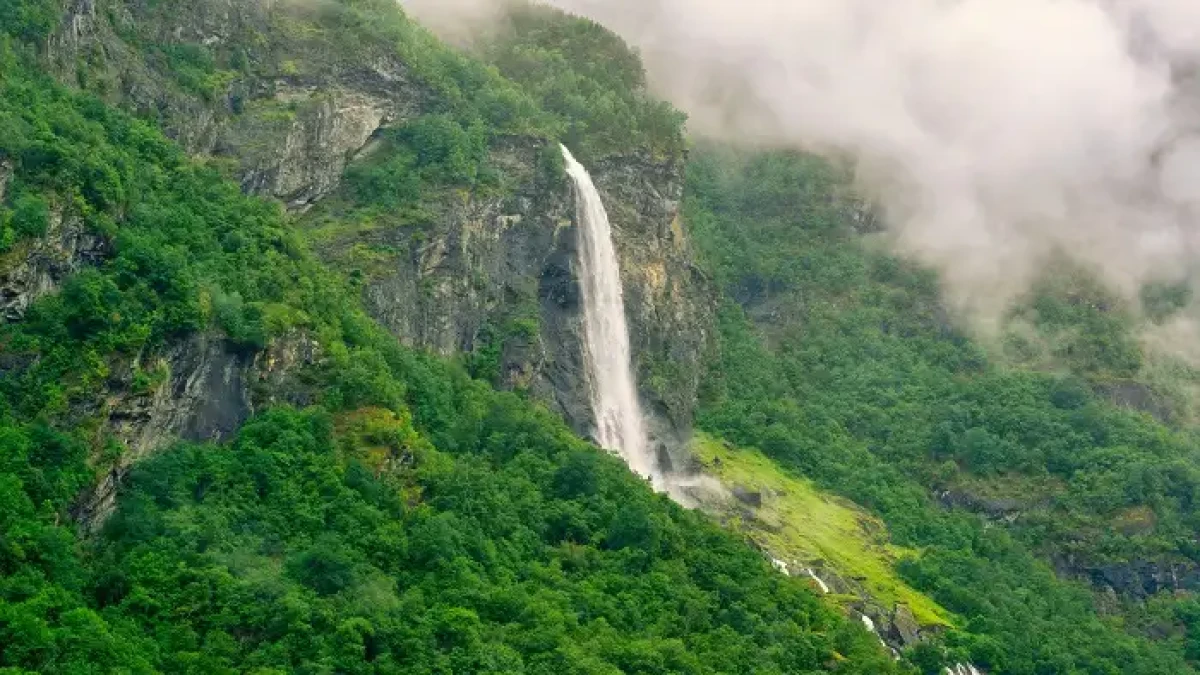


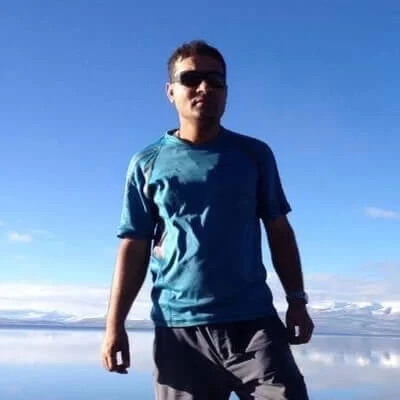
.webp)

